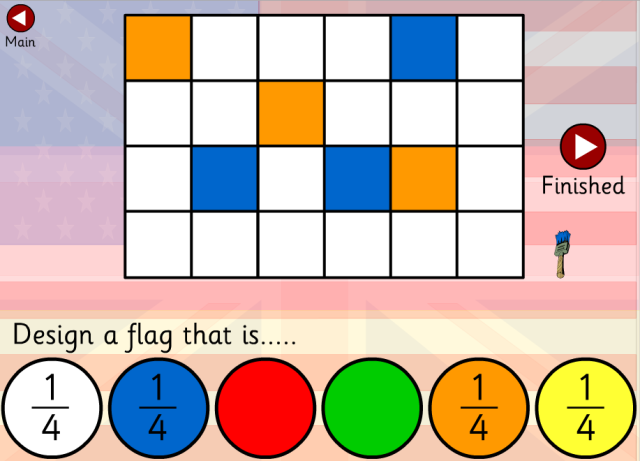

Thanks to a fan-driven campaign called Operation Rainfall and the efforts of XSeed Games, The Last Story has finally made its way over to North America. JRPG aficionados have been waiting for this day for quite some time. Acting as an unofficial swan song for Nintendo’s Wii console, The Last Story is a solid sendoff that fans of the genre will love. There are, however, a few issues that keep this title from being the masterpiece that so many initially branded it as.
Directed by famed game designer Hironobu Sakaguchi, best known for creating the Final Fantasy series, The Last Story stays true to its designer’s roots while still standing as its own game. The story starts off with a band of mercenaries, led by a man named Dagran, as they go through a temple on some sort of mission. The perspective then shifts to Dagran’s best friend Zael, and he becomes the main focus of the adventure. Each mercenary attached to the ragtag group hopes to become a knight one day, but that dream comes to a screeching halt when a runaway by the name of Lisa enters their lives. Things get more complicated when an evil race known as the Gurak enter the scene and start causing trouble, but a secret power obtained by Zael could help level the playing field.
There are several different control options available, but The Last Story is best played with a Classic Controller. It’s not a necessity, but getting a hang of the game happens a lot more quickly with a traditional gamepad. There are plenty of different controls to memorize too, because this is a very action-oriented RPG. Unlike the turn-based combat that Sakaguchi has made use of in the past, The Last Story keeps players in control of the hero; they will only surrender control of the protagonist to enter an over-the-head mode that allows Zael to choose which target his allies attack and which move they go about completing that action with. Combat in this particular game can play out in several different ways, and an appropriate strategy will be required once you start getting into the thick of the campaign.
Once a group of enemies is spotted, players will instantly be thrown over the battlefield and given a top-down look at the layout of the impending fight. This gives anyone playing a chance to map out a tactic, and once they’ve done that it’s a simple press of the ‘a’ button to enter the fray. Within the first few minutes of The Last Story, gamers will be exposed to overly simplified combat. The player-controlled character will automatically swing his weapon when approaching an enemy, and if gamers find this adequate then they can keep this mechanic on throughout their entire adventure. It can prove extremely cumbersome though, and you may find yourself trapped behind a sea of enemies with no way to move — thanks entirely to a never-ending flurry of sword strikes. This option, thankfully, can be turned off, but the mechanic’s very existence is confusing.
Up to six teammates can be in a party at once, although there are a few times when characters in your company can’t be told what to do during battle. The group usually consists of several different types of fighters, some that have magical abilities and others that prefer to get right into the heat of battle with physical attacks. Zael has the benefit of several different battle techniques, but the most unique is his crossbow. By allowing players to lure in unsuspecting baddies or mapping out commands to destroy certain parts of the environment, the crossbow mixes up the monotony of combat nicely.
Gameplay in The Last Story is solid, but camera control is a serious issue. Simply shifting the camera around presents enough challenge on its own, but having to swing the angle around mid-battle can prove to be unbelievably frustrating. Facing hordes of enemies can jam the camera into a wall, and even just turning a sharp corner is enough to throw off the entire perspective. It’s a constant issue, and it’s one of the biggest problems that this game has.
Another problem that some will have with The Last Story is that it looks like a PlayStation 2 game, and while it’s no secret that the Wii is far from a graphical powerhouse, there are definitely better looking games on the platform. There are certain sections where the movements of characters on-screen look unnatural and blocky, and entering new areas can cause frame rate issues. Nobody was expecting a high-definition experience, but looking at similar games like Xenoblade Chronicles, it’s obvious that the system is capable of more.
Despite lacklustre graphics, the art style is enough to make the visuals bearable, and there are even a handful of cinematics that actually look really good. One scene in particular, featuring The Last Story’s main protagonist and his newly discovered love interest gazing upon a meteor shower, is incredibly well done – it’s easily one of the best looking portions of the entire game. Aside from that, many of the in-game cutscenes look great. Too bad the same can’t be said for the dialogue that fills them.
The voice acting in The Last Story is far from good. In fact, it’s so bad that there are a few occasions where gamers will be pulled right out of the story. To be fair to the voice actors who played each of these characters, they really didn’t have much of a script to work with. Like many foreign films that have been dubbed in English, the lips of each character don’t sink all that well with the actual words that are being spoken, and some of the things they say don’t make much sense. The being said, the events that unfold do manage to grab your attention — despite a few unintentionally bad, laugh-out-loud moments — and players will find themselves growing attached to the likable group of mercs.
Aside from the traditional single-player elements, there is an online multiplayer component to The Last Story. There are two different modes to play through, and each has its own appeal. The first is a co-op option that connects several different gamers online simultaneously, as they work together to clear areas by defeating some thuggish monsters. The hero that players have built up during the course of the main story is available in this setting. Sadly, co-op only exists as an online mode, meaning that friends hoping to tear through beasts together from the same couch are unable to do so.
Deathmatch is the second multiplayer option. Anyone with a decent Wi-Fi connection can play in a free-for-all environment, or they can meet up with friends for some team-based antics (appropriately titled ‘Team Battle’). Gamers have 5 minutes to get as many take downs as possible, with victory going to whomever racks up enough points. Only equipment earned during the campaign is usable in Deathmatch, but winning battles and earning prestige will unlock rare weapons, dyes, and items for single-player use. The connection speed was reasonable whenever I entered a match, but there was some noticeable lag.
Despite having a handful of flaws, The Last Story is a decent game that JRPG fans won’t want to miss. Anyone indifferent about the genre won’t be missing out on much, but it’s still one of the better games to land on the Wii this year. It won’t blow anyone away, but The Last Story will go down in gaming history as a small victory for fans who wanted to bring one more decent game to a dying console.
The Last Story is available now, exclusively on the Wii.
–
Follow me on Twitter @TheRileyLittle.




 Xbox 360 Slim vs Playstation 3 Slim
Xbox 360 Slim vs Playstation 3 Slim Dragon Ball XenoVerse Guide: How to Make It as a Beginner
Dragon Ball XenoVerse Guide: How to Make It as a Beginner 10 Free Math Games Your Kids Should Be Playing
10 Free Math Games Your Kids Should Be Playing A Sum Of Parts: Just One More Drink
A Sum Of Parts: Just One More Drink How to Disable the Microsoft Office Upload Center
How to Disable the Microsoft Office Upload Center